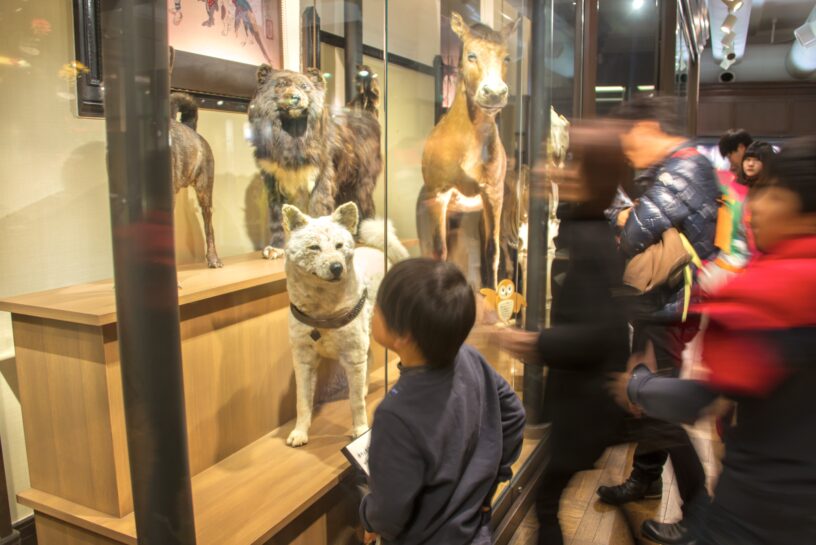After Hachi passed away, his fur coat was not disposed of. Instead, Sakamoto Kiichi, the best taxidermist in Japan at that time, was entrusted with making Hachi’s mount.
Inspired by Hachi’s loyalty, just as sculptor Andō Teru had been, Sakamoto was determined to create the finest mount for Hachi among all his works. His assistant, Honda Shin, who had visited Shibuya Station just before Hachi’s death to observe and take photographs of his last days, did most of the actual work.
The Immortal Heartbeat of Hachi
Making a mount of a dog is considered the most difficult task among all animals. Faced with this challenge, Sakamoto and Honda embarked on the formidable task of creating Hachi’s likeness. It took them more than three months to complete.
As a final touch, Honda placed a note inside Hachi’s chest. Out of several tens of thousands of mounts that Honda had made in his lifetime, this is the only one that he placed such a note. In doing so, Mr. Honda put a heart in Hachi.
Resonance with Literature
This act of love echoes with the story of “The Happy Prince,” written by Oscar Wilde in 1888. In the narrative, God instructs an angel to bring the most precious thing in the city. The angel selects the broken heart, made of lead, from the Happy Prince’s statue, and the body of the swallow who had aided the prince—both discarded on a dust-heap—as the two most precious things in the city, presenting them to God.
As the prince’s heart was resurrected, Hachi’s “heart” would continue beating forever. Hachi’s mount was unveiled at the National Museum of Nature and Science in June 1935.
The Unbreakable Bond: Hachi and Jirō
In a poetic twist of fate, the museum is located in Ueno Park, near Ueno Station, where Hachi arrived as a puppy in January 1924. Hachi’s mount is displayed beside the mount of Jirō, one of the two Sakhalin Huskies who survived the ill-fated first Japanese Antarctica Cross-Winter Expedition.
Saitō Hirokichi, the man who made Hachi famous, attempted to save the 15 Sakhalin Huskies chained at the unmanned station and even requested President Dwight Eisenhower for assistance from the icebreaker USS Burton Island. His pleas were in vain. It’s not a coincidence that Hachi and Jirō sit together; they have a mutual supporter in Saitō.
If you wish to delve further into the captivating life of Hachiko, we invite you to explore the pages of the new Hachiko biography, available here.
And stay tuned to our blog for regular Hachiko Snapshots, where you can follow his incredible journey from a sickly puppy to a worldwide icon.
Author Mayumi Itoh is considered the “official biographer” of Hachiko. Mayumi is a former Professor of Political Science at the University of Nevada, Las Vegas, and has previously taught at Princeton University and Queens College, City University of New York. She currently teaches haiku writing at Princeton University.



 >
>
